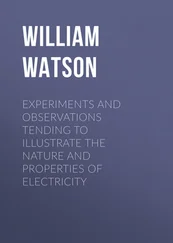Mark Changizi - Harnessed - How Language and Music Mimicked Nature and Transformed Ape to Man
Здесь есть возможность читать онлайн «Mark Changizi - Harnessed - How Language and Music Mimicked Nature and Transformed Ape to Man» весь текст электронной книги совершенно бесплатно (целиком полную версию без сокращений). В некоторых случаях можно слушать аудио, скачать через торрент в формате fb2 и присутствует краткое содержание. Год выпуска: 2011, Издательство: Perseus Books Group, Жанр: Старинная литература, на английском языке. Описание произведения, (предисловие) а так же отзывы посетителей доступны на портале библиотеки ЛибКат.
- Название:Harnessed: How Language and Music Mimicked Nature and Transformed Ape to Man
- Автор:
- Издательство:Perseus Books Group
- Жанр:
- Год:2011
- ISBN:нет данных
- Рейтинг книги:5 / 5. Голосов: 1
-
Избранное:Добавить в избранное
- Отзывы:
-
Ваша оценка:
- 100
- 1
- 2
- 3
- 4
- 5
Harnessed: How Language and Music Mimicked Nature and Transformed Ape to Man: краткое содержание, описание и аннотация
Предлагаем к чтению аннотацию, описание, краткое содержание или предисловие (зависит от того, что написал сам автор книги «Harnessed: How Language and Music Mimicked Nature and Transformed Ape to Man»). Если вы не нашли необходимую информацию о книге — напишите в комментариях, мы постараемся отыскать её.
Harnessed: How Language and Music Mimicked Nature and Transformed Ape to Man — читать онлайн бесплатно полную книгу (весь текст) целиком
Ниже представлен текст книги, разбитый по страницам. Система сохранения места последней прочитанной страницы, позволяет с удобством читать онлайн бесплатно книгу «Harnessed: How Language and Music Mimicked Nature and Transformed Ape to Man», без необходимости каждый раз заново искать на чём Вы остановились. Поставьте закладку, и сможете в любой момент перейти на страницу, на которой закончили чтение.
Интервал:
Закладка:
The answer is, “Of course.” A different pattern in footstep emphasis means the mover is shifting his body weight in a different pattern. The ¾ time mover has an emphasis on every third step, and thus alternates which foot gets the greater emphasis. The 4/4 time mover, on the other hand, has emphasis on every other step, with extra emphasis on every fourth step. These are the gait sounds of distinct behaviors. Real movements by people may not stay within a single time signature for prolonged periods, as music often does, but, instead, change more dynamically as the mover runs, spins, and goes up for a layup. Time-signature differences in movement imply differences in behavior, and so we expect that our auditory system is sensitive to these time signatures . . . and that music may have come to harness this sensitivity, explaining why time signature matters in music.
And notice that when we hear music with a time signature, we want to move consistently not only with the beat and the temporal pattern of notes, but also with the time signature. People could waltz to music with a 4/4 time signature, but it just does not feel right. People not only want to step to the beat, (something we discussed early in Chapter 4); they want to step extra hard on the emphasized beat.
This and the previous Encore section concerned rhythm. The upcoming two also concern rhythm, and how it interacts with melody and with loudness, respectively.
3 Fancy Footwork
When the kids and I are doing donuts in the parking lot at the dollar store—that is, driving the minivan in such tight circles that the wheels begin to screech and squeal—we are making minivan gangly banging sounds. Such behavior leads to especially complex rubber-meets-road hits and slides, sounds we revel in as we’re doing it. But the patrons at the dollar store hear an additional feature. The patrons hear Doppler shifts, something that the kids and I do not hear because we are stationary relative to the minivan. For the dollar store patrons, the pitch of the envelope of minivan gangly bangings rises and falls as we approach and recede from them in our donuts. In fact, it is because my minivan is veering so sharply that its ganglies begin banging in a more complex fashion. Compared to minivans not doing donuts, minivans doing donuts change pitch faster and have more complex “gaits.” Greater pitch changes therefore tend to be accompanied by more complex gait patterns.
This pitch-rhythm connection is also found among human movers. When we turn, we are likely to have a more complex gait and gangly pattern than when we are simply moving straight ahead. For example, when you turn left, you must lean left, lest you fall over on your right side; and your legs can no longer simply swing straight past each other, but must propel the body leftward via a push or pivot. And many turns involve more complex footwork, such as sidestepping, trotting, twists, and other maneuvers we acrobatic apes regularly carry out. For example, when a basketball player crosses the court, his or her path is roughly straight, and the resultant gait sounds are a simple beat. Once a player has crossed the court, however, his or her movements tend to be curvy, not straight, as players on offense try to free themselves up for a pass, or players on defense loom in for a steal or shadow the offense to prevent a pass, in each case setting off a richer pattern of gangly sounds.
Does music behave in this way? When melodic pitches change—a signal that the depicted mover is turning, as we discussed in Chapter 4—does the rhythm tend to get more complex? As a test for this, I sampled 713 two-beat intervals having at least two notes each from the Dictionary of Musical Themes , and for each recorded whether the pitch was varying or unvarying, and whether the rhythm was simple (one note on each beat, or “just the footsteps”) or complex (more than “just the footsteps”). (Data were sampled from 2/4 and 4/4 time signature pieces, and from every tenth theme up to “D400” in the Dictionary.) When pitch changed over the two-beat intervals, the probability was 0.66 that the beat was complex, whereas when pitch did not change the probability was only 0.35 that the beat was complex. Consistent with the prediction from real-world turners, then, these data suggest that when music changes pitch—the Doppler signature of a mover changing direction—its rhythm tends to become more complex. That is, as with people, when music “turns,” the ganglies start flying.
We see, then, that melody interacts with rhythm in the way Doppler interacts with gait. Now let’s ask whether loudness also interacts with rhythm, as expected from the ecology of human movers. We take that up in the next Encore section.
4 Distant Beat
As I write this I am on the (inner) window ledge of my office at RPI, overlooking downtown Troy and the Hudson River. I’m on the fifth floor (of the city side of the building), with a steep, sloping hill at the bottom, so everything I hear is either fairly far away, or very far away. Because of my extreme distance from nearly everything, I end up hearing only a small sample of the sounds occurring in the city. Mainly, I hear the very energetic events. If a sound were not very energetic, then it would be inaudible by the time the sound waves reached me. I can see a tractor dumping rocks, but I hear only the boom of a particularly large one, missing out on the sounds of the many smaller rock hits I can see but cannot hear. Generally, when something makes complex sounds, whether it is a car, a washing machine, or a tornado, some of the noises composing the whole are more energetic than others. If it is far away from you, then you will only hear the most energetic parts of the sound. But if you are close, you’ll be able to hear the full panoply of sounds.
As with most complex sound makers, human movers make sounds of varying energy and frequency. The most energetic sounds tend to be our footsteps. Accordingly, the first thing we hear when someone is approaching from afar tends to be their footsteps. The other gait-related sounds from clanging limbs are difficult to hear when far away, but they get progressively more audible as the mover nears us. That is, as a mover gets closer to us and the loudness of his gait sounds thereby rises, the number of audible gait sounds per footstep tends to increase.
If music has culturally evolved to sound like human movement, then we accordingly expect that the louder parts of songs should have more notes per beat (i.e., more fictional gangly bangs per step). Do they? Do fortissimo passages have greater note density than pianissimo ? Caitlin Morris, as an undergraduate at RPI, set out to test this among scores in An Anthology of Piano Mu s ic, Vol. II: The Classical Period , by Denes Agay (New York: Music Sales America, 1992), and found that this is indeed the case. Figure 43 shows how the density of notes (the number of notes per beat) varies with loudness over 60 classical pieces. One can see that note density increases with loudness, as predicted. Music doesn’t have to be like this. Music could pack more notes in per beat in soft parts, and have only on-the-beat notes for the loud parts. Music has this louder-is-denser characteristic because, I submit, that’s a fundamental ecological regularity our auditory systems have evolved to expect for human (and any) movers.
This result is, by the way, counter to what one might expect if loudness were due not to spatial proximity but to the energy level (or “stompiness,” as we discussed in the Chapter 4 section titled “Nearness versus Stompiness”) of the mover. Louder stomps typically require longer gaps between each stomp. “Tap, tap, tap, tap, tap” versus “BANG! . . . . . . . . BANG!”
Читать дальшеИнтервал:
Закладка:
Похожие книги на «Harnessed: How Language and Music Mimicked Nature and Transformed Ape to Man»
Представляем Вашему вниманию похожие книги на «Harnessed: How Language and Music Mimicked Nature and Transformed Ape to Man» списком для выбора. Мы отобрали схожую по названию и смыслу литературу в надежде предоставить читателям больше вариантов отыскать новые, интересные, ещё непрочитанные произведения.
Обсуждение, отзывы о книге «Harnessed: How Language and Music Mimicked Nature and Transformed Ape to Man» и просто собственные мнения читателей. Оставьте ваши комментарии, напишите, что Вы думаете о произведении, его смысле или главных героях. Укажите что конкретно понравилось, а что нет, и почему Вы так считаете.












